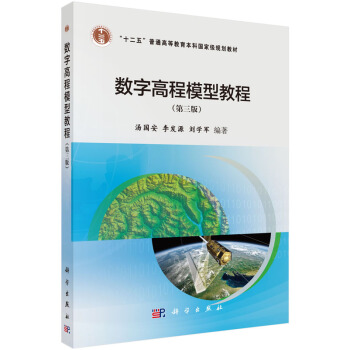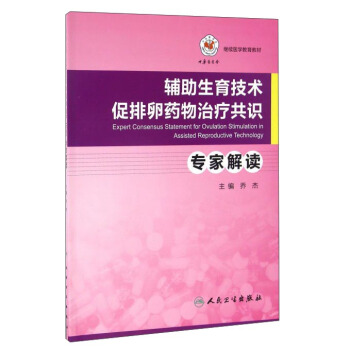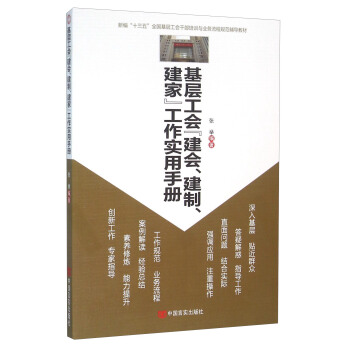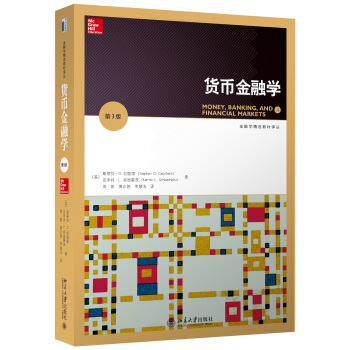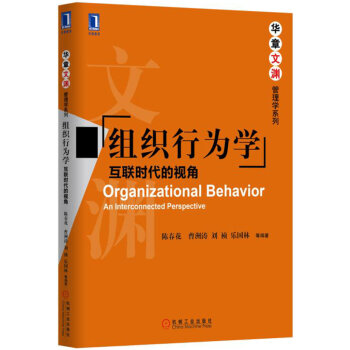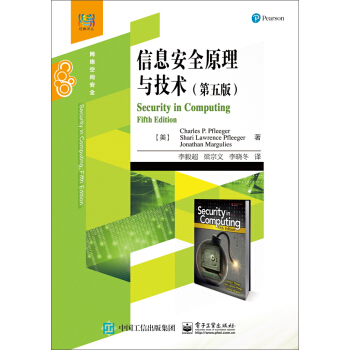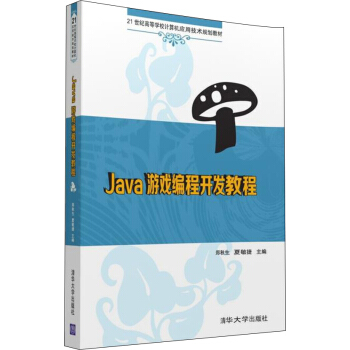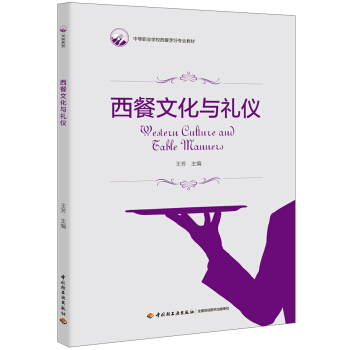

具体描述
内容简介
《中国古代社会与文化英文教程》是高等院校文化素质类通识课教材,旨在通过对中国古代社会文化诸方面的学习以及相关英语表达方式的训练,使学生了解古代中华民族风貌,并能以规范、流畅的表达方式对外介绍、弘扬中华文化,让世界了解古代中国。本教材融知识性和趣味性于一体,图文并茂地提供了一种展现古代中国风采的视觉方式。在讲授过程中,充分利用电子教程的资源优势,根据所授内容插入相应图片和简短音视频资料,以凸显重要的主题,使课程内容生动、直观,符合90后大学生的认知心理。
全书共10个单元,每单元分为两部分,通过听说读写等多种训练方式帮助学生了解并能够用英语介绍中华文化。Section A通过阅读和写作的训练方式使学生掌握如何介绍中国古代社会与文化的方方面面。Section B以听说训练的方式提高学生的英语口头表达能力和跨文化交际能力。
作者简介
訾缨,北京林业大学外语学院教授、大学英语部主任,参与和主持“基于中西文化教育的大学英语教学改革”项目。目录
Unit 1 CreationText 1 Pan gu Creating the World
Text 2 Nuwa(女娲)and the Creation of Humans
Text 3 Situational Dialogue: The Four Supernatural Beasts in Ancient China
Text 4 Lecture on Chinese Creation Myths
Unit 2 Philosophy
Text 1 Taoism and Confucianism — Major Chinese Philosophies
Text 2 Three Fables in Zhuangzi
Text 3 Situational Dialogue: About the Book of Changes(The I Ching)
Text 4 An Introduction to the “Hundred Schools of Thought” (诸子百家)
Unit 3 Language and Literature
Text 1 Romance of the Three Kingdoms
Text 2 Poetry of the Tang Dynasty
Text 3 Situational Dialogue: About Journey to the West
Text 4 Lecture: An Introduction to Traditional Chinese Literature in Part
Unit 4 Education in Ancient China
Text 1 History of Ancient Chinese Education
Text 2 Confucian Educational Theory
Text 3 Situational Dialogue: On Chinese Imperial Examination
Text 4 An Introduction to China Ancient Academies (书院)
Unit 5 Science and Technology
Text 1 The Four Great Inventions
Text 2 Shen Kuo and Dream Pool Essays
Text 3 Situational Dialogue: Xu Guangqi
Text 4 An Introduction to Zhaozhou Bridge
Unit 6 Traditional Customs
Text 1 Traditional Marriage Rituals
Text 2Traditional Chinese Mascots (吉祥物)
Text 3 A Situational Dialogue on Fengshui
Text 4 An Introduction to Traditional Chinese Zodiac (生肖)
Unit 7 Beijing in History
Text 1 A Brief History of Beijing
Text 2 Walls and Gates of Beijing
Text 3 Situational Dialogue: About the Forbidden City
Text 4 A Tour guide to Beijing’s Hutong and Siheyuan
Unit 8 Leisure
Text 1 Tea Culture
Text 2 Traditional Music
Text 3 Situational Dialogue: About Go(围棋)
Text 4 An Introduction to Chinese Calligraphy
Unit 9 Virtues
Text 1 The Five Constant Virtues
Text 2 Women of Ancient China
Text 3 Situational Dialogue: About Filial Piety in China
Text 4 An Introduction to Four Gentlemen in Plants
Unit 10 National Treasures
Text 1 Dunhuang Mogao Grottoes
Text 2 Tang Tri Colored Glazed Pottery
Text 3 Situational Dialogue: Face�睠hanging in Sichuan Opera
Text 4 The Qingming Festival by the Riverside
前言/序言
用户评价
我必须承认,最初我对于这本《中国古代社会与文化英文教程(第二版)》并没有抱有过高的期望。市面上同类题材的教材不在少数,我曾接触过不少,但往往要么语言过于学术化,要么内容过于碎片化,总觉得缺少一种能够真正打动人心、引人入胜的力量。然而,当我翻开这本书后,我的看法立刻发生了转变。它给我带来的,是一种前所未有的学习体验,一种沉浸式的文化探索之旅。 这本书最让我惊艳的一点,在于它将宏大的历史叙事与具体的文化现象巧妙地结合起来。它没有简单地罗列年代和事件,而是选取了许多具有代表性的侧面,例如古代的节日习俗、文学艺术的演变、人们的日常起居、以及思想观念的碰撞等等。这些具体的切入点,让抽象的概念变得鲜活起来。通过阅读关于唐代长安城生活的片段,我仿佛看到了那个繁华都市的市井百态;通过欣赏古代诗词的英文翻译,我感受到了那种跨越千年的情感共鸣。 而且,教程在处理文化差异上做得非常出色。它充分认识到,许多中国古代的社会文化概念在西方语境下是难以直接理解的。因此,书中花费了大量的篇幅来解释这些概念的深层含义,并且通过对比的方式,帮助我们理解它们在历史发展中的独特性。例如,在阐述“孝道”时,书中不仅解释了其在家庭伦理中的核心地位,还探讨了它如何渗透到社会政治的各个层面,以及在不同历史时期其内涵的变化。这种细致入微的讲解,避免了简单的标签化和误读。 此外,教程中的案例分析和讨论题的设计,更是将学习的深度推向了一个新的层次。它们鼓励我去质疑,去思考,去将所学知识与更广泛的社会和历史背景联系起来。比如,在讨论了古代的商业发展后,会有题目让我去分析其对社会结构和阶层流动的影响。这些问题非常有启发性,让我不再满足于被动接受信息,而是主动去建构自己的理解框架。 总的来说,这本书不仅仅是一本英文教程,它更是一部关于中国古代文明的“文化百科全书”。它以一种非常优雅和富有洞察力的方式,为我们展现了一个丰富多彩、充满智慧的古代中国。我强烈推荐给所有对中国文化感兴趣,并且希望通过英文学习来加深理解的读者。它绝对会超出你的期待。
评分作为一个对中国古代历史充满浓厚兴趣,但苦于英文阅读能力尚且不足的读者,这本《中国古代社会与文化英文教程(第二版)》简直是我一直以来在寻找的“及时雨”。我曾经尝试过阅读一些英文的中国历史书籍,但往往因为语言障碍而倍感挫败,那些枯燥的学术论述和陌生的专有名词,总是让我难以深入。这本书的出现,彻底改变了我的学习体验。 它最吸引我的地方在于其系统性和逻辑性。教程并没有采用流水账式的叙述,而是将庞杂的中国古代社会文化,分解成一系列易于理解的主题,例如“家族与宗法制度”、“士人阶层与教育”、“经济活动与贸易”、“宗教信仰与哲学思想”等。每一个主题都像是一个精心搭建的模块,提供了充足的背景信息,然后循序渐进地引入相关的英文文本。这种结构让我能够有清晰的脉络,不会被海量的信息淹没,而是能够逐步建立起对整个体系的认知。 而且,书中对于英文文本的选择也是非常有策略的。作者们挑选的都是那些既具有代表性,又相对通俗易懂的段落。他们并没有一味追求晦涩的古文翻译,而是更侧重于选取能够展现中国古代社会文化精髓的史料、文学作品节选,或是历史学家的分析。同时,书中还附带了大量的注释和词汇表,对于一些关键的、在英文中没有现成对应词的文化概念,比如“仁”、“义”、“礼”、“智”、“信”,作者都花了相当大的篇幅进行解释,并给出英文中类似的表达方式,让我能够理解其核心含义,而不是停留在字面意思的翻译上。 更重要的是,教程中的练习题设计得非常巧妙,它们不仅仅是简单的填空或选择,而是鼓励我去思考、去比较、去联系。比如,在学习完关于中国古代官僚选拔制度的内容后,会有题目引导我去思考其优点和缺点,甚至与现代社会的人才选拔方式进行对比。这种引导性的思考,让我能够更主动地去消化和吸收知识,而不是被动地接受。这对于培养我的批判性思维和解决问题的能力,都起到了极大的帮助。 总而言之,这本书不仅在语言层面为我扫清了障碍,更在思维层面给了我启发。它让我能够以一种更加开放和包容的心态去理解中国古代社会与文化的复杂性,并且能够在跨文化交流中,更准确、更深刻地表达自己的观点。我真心推荐给所有希望深入了解中国古代文明,又希望提高自己英文学术阅读能力的学习者。
评分这本书的问世,无疑为我们这些对中国古代社会与文化充满好奇的非母语学习者打开了一扇清晰而丰富的窗口。我一直对悠久而博大的中华文明心向往之,但传统的学术著作往往语言晦涩,逻辑跳跃,让初学者望而却步。而这本《中国古代社会与文化英文教程(第二版)》则巧妙地解决了这个问题。它不仅仅是一本教材,更像是一位耐心细致的导游,带领我们一步步走进那个遥远的时代。 首先,它的编排设计非常人性化。每一章都围绕着一个核心主题展开,例如家庭结构、官僚体系、宗教信仰、艺术表现等等,这种主题式的划分让我能够系统地、有条理地去理解不同层面的文化。更重要的是,它为每个主题都提供了详实的背景介绍,并配以精心挑选的英文文献节选。这些节选既有代表性,又考虑到可读性,避免了过于艰深的古文或学术行话,让我能在理解基本概念的同时,也接触到原汁原味的史料片段。 其次,教程的语言处理方式令人称道。它并非简单地将中文概念翻译成英文,而是着重于解释那些在英文语境下可能难以直接对应,或者需要额外解释的文化概念。比如,书中对于“礼”的阐释,就不仅仅是“ritual”或“etiquette”这么简单,而是结合了它在社会秩序、人际关系、道德规范等多方面的意义。作者们还为一些生僻的词汇和概念提供了清晰的定义和例句,大大降低了阅读障碍。这种细致的“文化中介”作用,是许多同类书籍所缺乏的。 再者,教程中的练习和思考题设计得非常实用。它们并非简单的知识点记忆测试,而是引导我进行更深层次的思考和分析。例如,在讨论了科举制度后,会有题目让我比较古代中国的选官方式与现代社会人才选拔机制的异同;在介绍了儒家思想后,则会引导我思考其对当代社会价值观的影响。这些练习不仅巩固了知识,更重要的是培养了我独立思考和批判性分析的能力,让我能够将书本上的知识与现实世界联系起来。 最后,我认为这本书在提供知识的同时,也注重培养学习者的跨文化沟通能力。通过学习中国古代的社会结构和文化思想,我不仅了解了中国,也更加理解了不同文明的独特性和共通性。这种理解,是建立在全球化时代人与人之间相互尊重和理解的基础。我非常期待能通过这本书,进一步提升自己的英文阅读和理解能力,并在这个过程中,深入体验中华文明的独特魅力,为将来与来自不同文化背景的人进行交流打下坚实的基础。
评分作为一个长期以来对东方文化,尤其是中国古代社会有着浓厚兴趣的海外学生,我一直渴望找到一本既能系统介绍中国古代文化精髓,又能以清晰、地道的英文呈现的优秀教材。这本《中国古代社会与文化英文教程(第二版)》的出现,无疑是圆了我一个长久以来的心愿。我不得不说,这本书的质量远远超出了我的预期,它是一次令人愉悦且收获颇丰的学习旅程。 这本书最让我印象深刻的是,它并没有将中国古代社会与文化看作是一个静态的、封闭的体系,而是将其置于一个动态的发展和演变的过程中来呈现。教程的每一个章节,都巧妙地将不同时期的社会制度、思想观念、生活方式的变化融入其中,让读者能够清晰地看到历史的进程和文化的传承与创新。例如,在介绍“教育制度”时,书中就详细梳理了从先秦时期的私学,到汉代“独尊儒术”后的官学,再到后来科举制度的建立和演变,以及这些制度对社会结构和人才流动的影响。 语言的运用是这本书的一大亮点。作者们在处理大量专业术语和历史概念时,展现了非凡的功力。他们不仅提供了精准的英文翻译,更重要的是,通过丰富的语境和详细的解释,让这些原本可能晦涩难懂的词汇变得鲜活且易于理解。比如,对于“五行”、“阴阳”等哲学概念,书中都给出了清晰的阐释,并用英文案例来说明它们在古代社会中的应用。这种“化繁为简”的能力,对于非母语学习者来说,简直是福音。 此外,教程中的图片、地图和图表的运用,也极大地增强了学习的直观性和趣味性。它们不仅仅是装饰,更是帮助我们理解文本内容的重要辅助。通过精美的古建筑插图,我仿佛置身于唐宋时期的市井;通过展示古代交通路线的地图,我能够更直观地理解贸易和文化交流的范围。这些视觉元素,让抽象的历史变得触手可及。 更值得称道的是,书中为每一章节都设计了富有启发性的思考题,这些题目鼓励读者进行批判性分析,并尝试将所学知识应用到更广泛的语境中。例如,在探讨古代的城市规划后,会有题目让我思考其在现代城市发展中的借鉴意义。这种引导性的练习,让我不仅仅是知识的接收者,更是知识的创造者。 总而言之,这本教程以其严谨的学术态度、流畅的英文表达、丰富的学习资源和极具启发性的教学设计,为我打开了通往中国古代社会与文化的一扇大门。它不仅是一本优秀的教材,更是一本值得反复品读的文化读物。
评分作为一名对世界历史文化有着浓厚兴趣的求知者,寻找一本能够系统性地介绍中国古代社会与文化,同时又具备优秀英文表达的教材,一直是我心中的一个目标。当偶然间发现这本《中国古代社会与文化英文教程(第二版)》时,我内心充满了惊喜,而阅读过之后,这种惊喜更是变成了由衷的赞叹。这本书在多个层面上都给我留下了深刻的印象,堪称一本卓越的学习资源。 教程最让我欣赏的地方,在于它将历史的宏观叙事与文化的微观细节完美地融合。它并没有局限于政治事件或王朝更迭,而是着眼于构成古代社会肌理的方方面面。从士农工商的阶层划分,到家庭内部的宗法关系,再到社会交往中的礼仪规范,甚至是人们的精神世界,如哲学、宗教、艺术等,都得到了细致而深入的阐述。通过对这些具体元素的分析,我不仅能够了解“是什么”,更能理解“为什么”。 书中对英文的运用,可以说是教科书级别的。作者们在翻译和解释那些具有中国特色的概念时,展现了极高的语言驾驭能力和文化敏感度。他们并非简单地进行直译,而是会详细解释其背后的文化含义和历史渊源,并用清晰流畅的英文将其表达出来。例如,在解释“道家”思想时,书中不仅介绍了其核心概念,还引用了相关的英文学术研究,帮助我从不同的角度去理解这一深奥的哲学流派。 此外,教程中的阅读材料选择非常精当。它们既有来自经典文献的节选,也有现代学者对古代文化的解读,内容丰富多样,能够满足不同层次读者的需求。而且,这些材料的英文难度适中,既能锻炼我的英文阅读能力,又能让我接触到不同风格的英文表达。每一次的阅读,都是一次知识和语言的双重提升。 更让我感到欣慰的是,书中设计了一系列的思考题和讨论题,这些题目往往能够引导我进行更深入的探究,促使我将所学知识融会贯通,并与其他文明进行比较。这种互动式的学习方式,极大地激发了我的学习兴趣和自主性。它让我感到,我不是在被动地接受知识,而是在主动地参与到对中国古代社会文化的探索中来。 这本书无疑是我在学习中国古代社会与文化道路上的一个重要里程碑。它不仅提升了我的知识储备,更重要的是,它以一种更加立体和深刻的方式,让我得以领略中华文明的独特魅力。
评分物流很给力
评分好
评分好
评分好
评分物流很给力
评分物流很给力
评分物流很给力
评分物流很给力
评分物流很给力
相关图书
本站所有内容均为互联网搜索引擎提供的公开搜索信息,本站不存储任何数据与内容,任何内容与数据均与本站无关,如有需要请联系相关搜索引擎包括但不限于百度,google,bing,sogou 等
© 2025 book.idnshop.cc All Rights Reserved. 静思书屋 版权所有

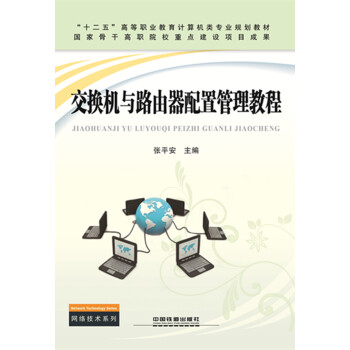
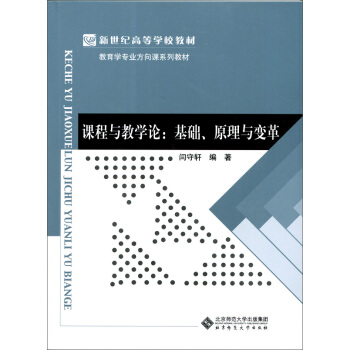
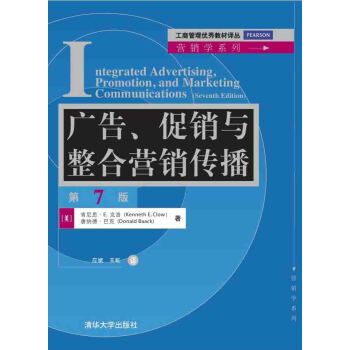
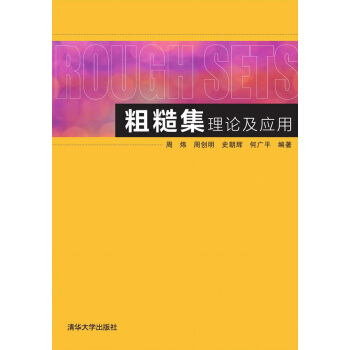
![新编外贸英语函电写作教程 [English Correspondencd Writing for Foreign Trade] pdf epub mobi 电子书 下载](https://pic.tinynews.org/11807987/56616936N311bd738.jpg)

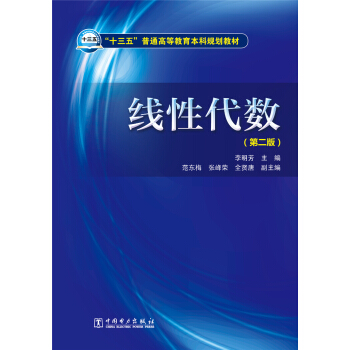
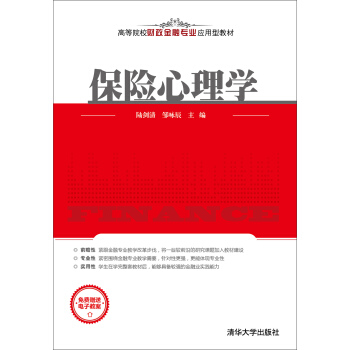

![配对交易:最基本的一种对冲套利交易 [Pairs Trading:One of the Most Basic Hedging Arbitrage Trading] pdf epub mobi 电子书 下载](https://pic.tinynews.org/11878531/56fa4be9N37675c97.jpg)
